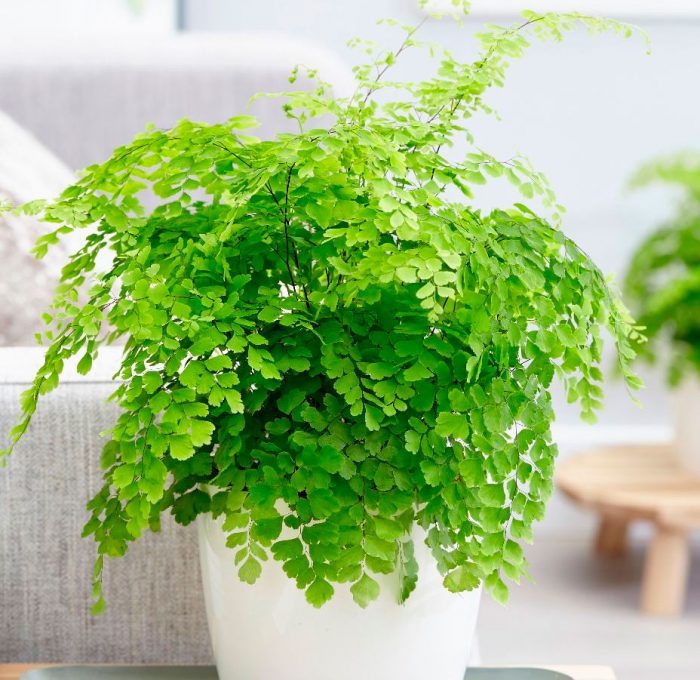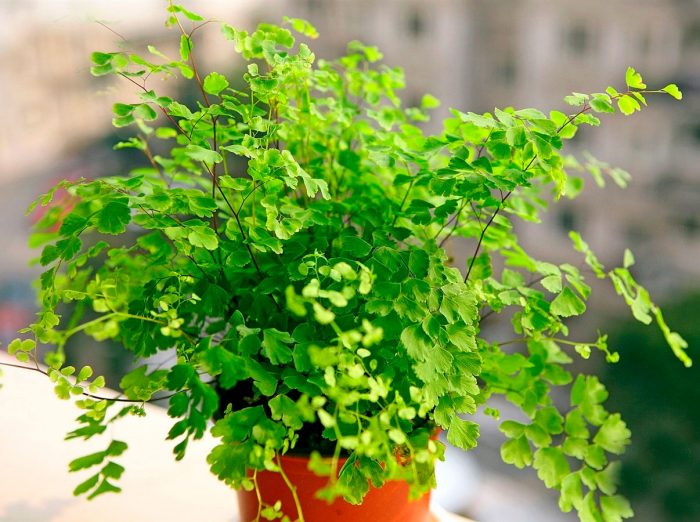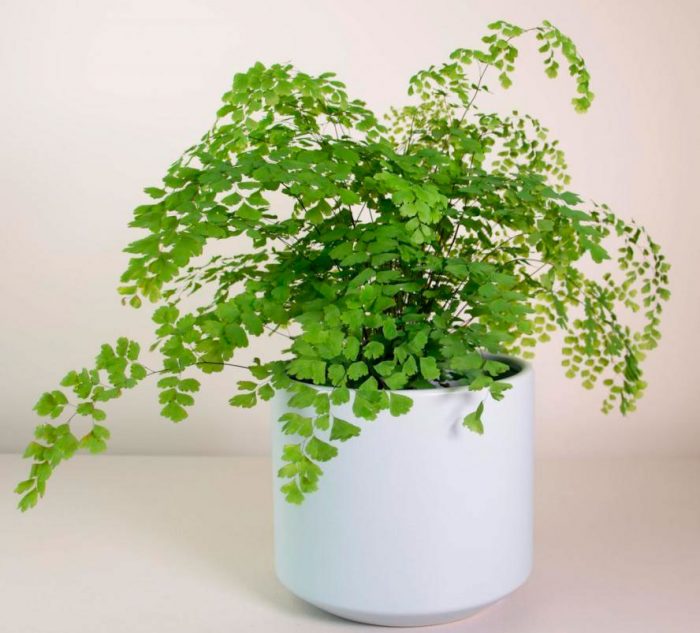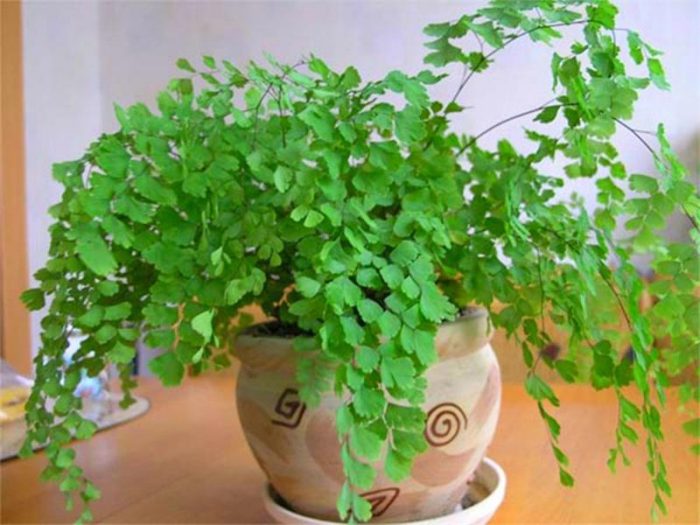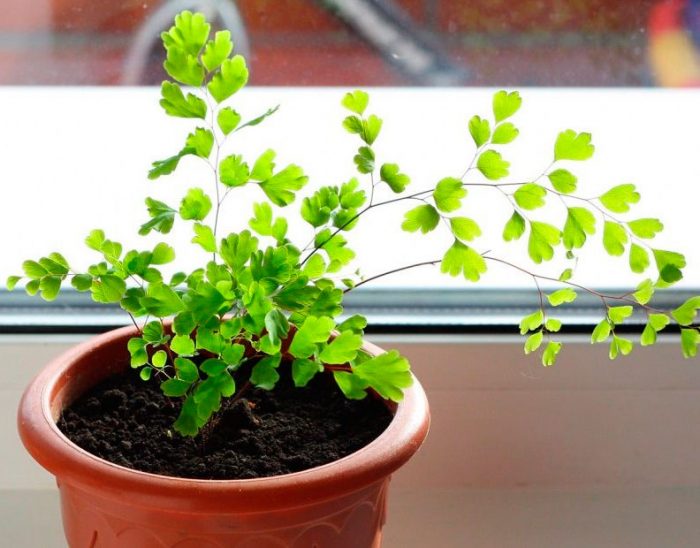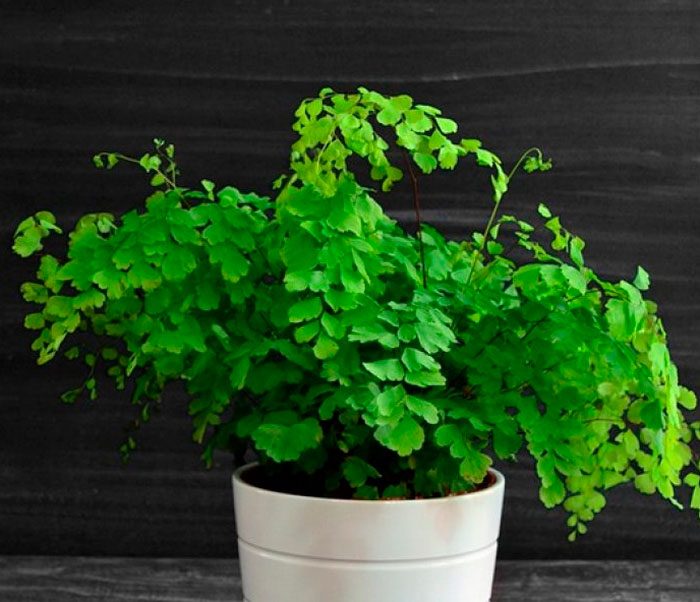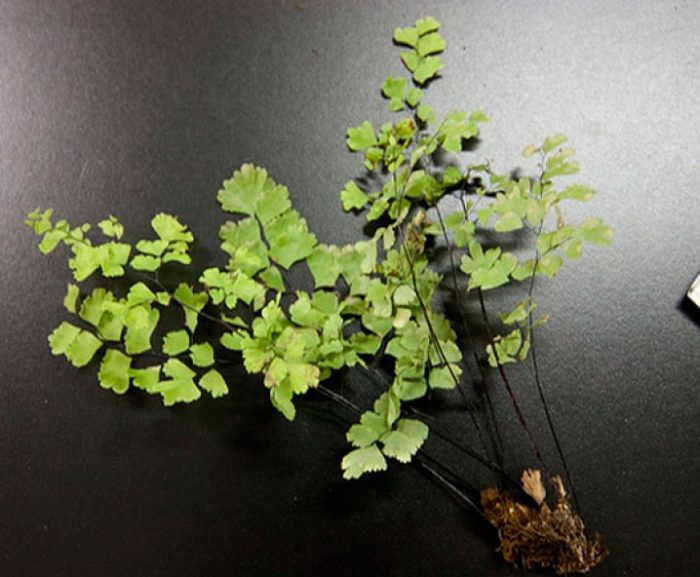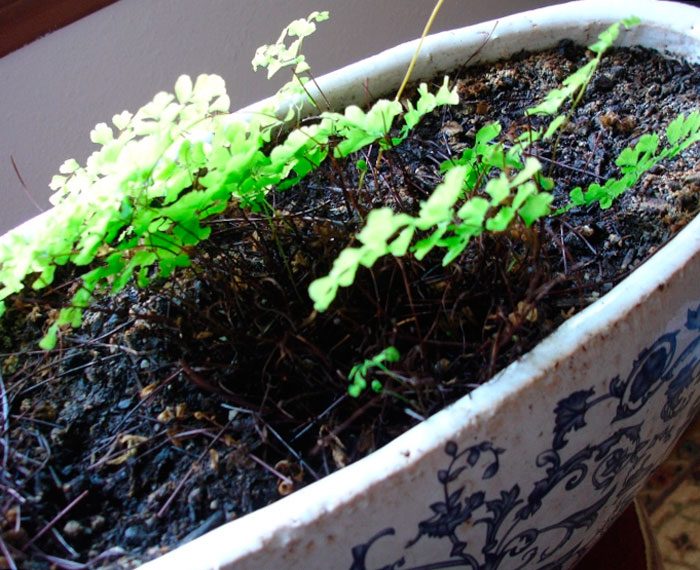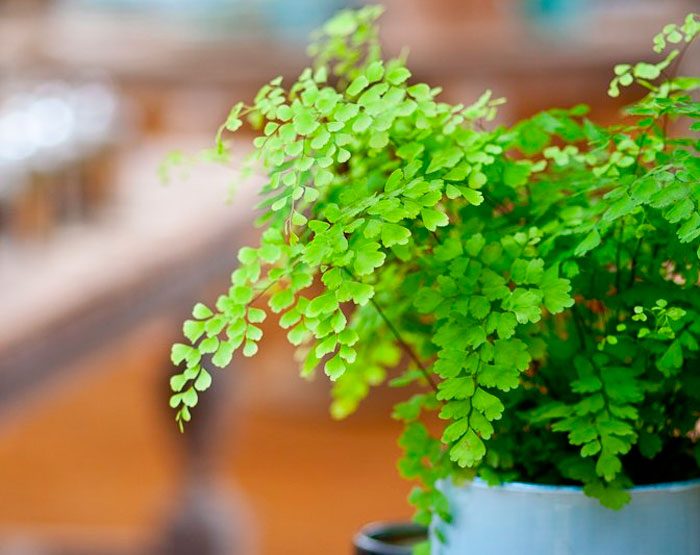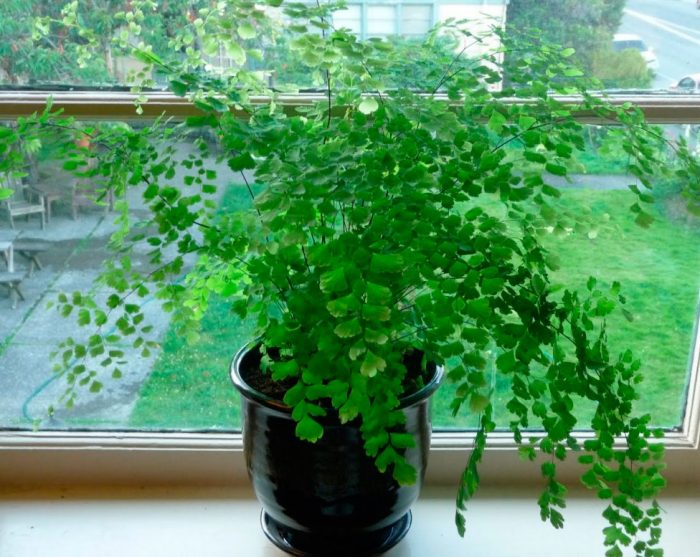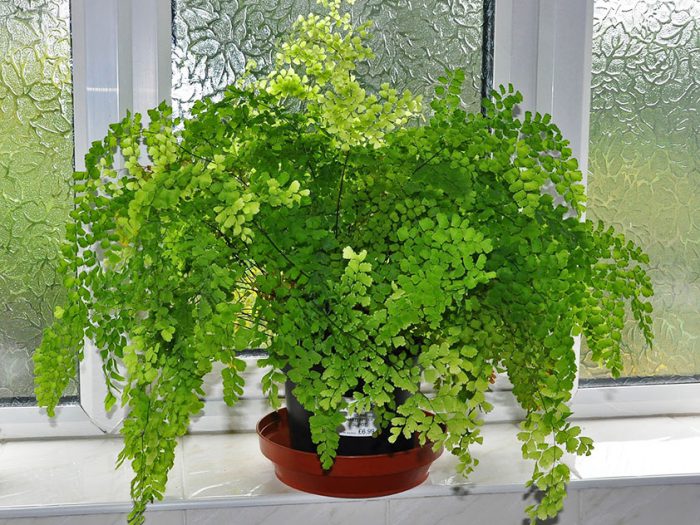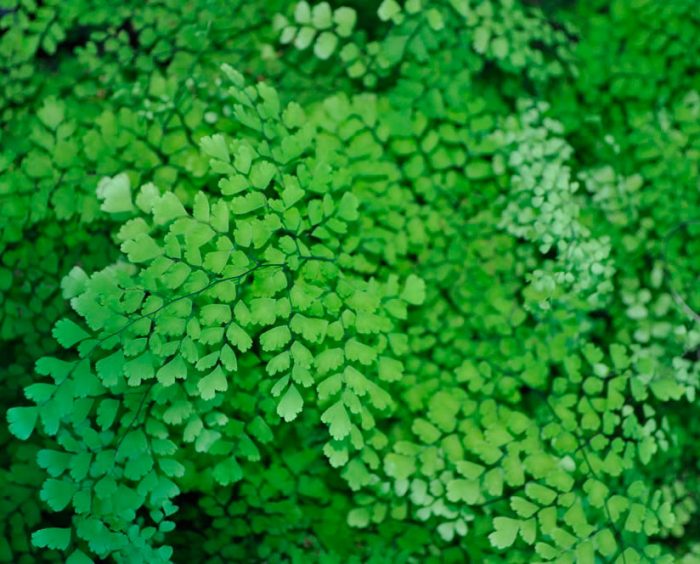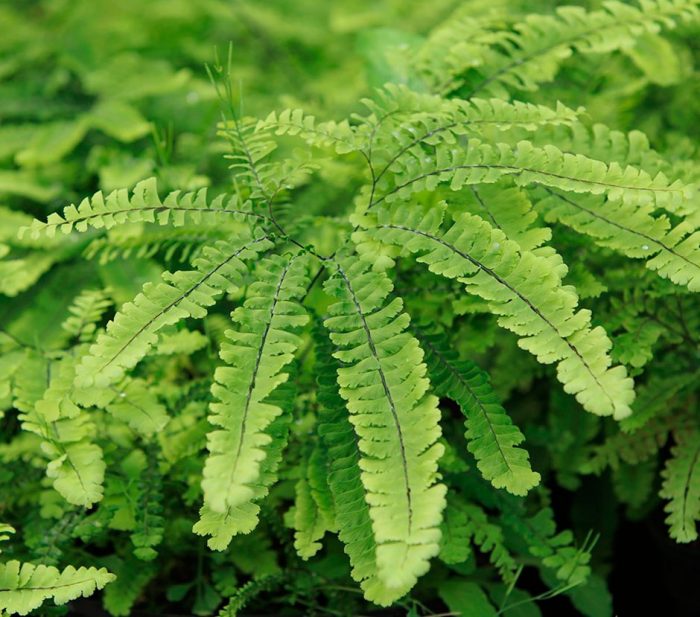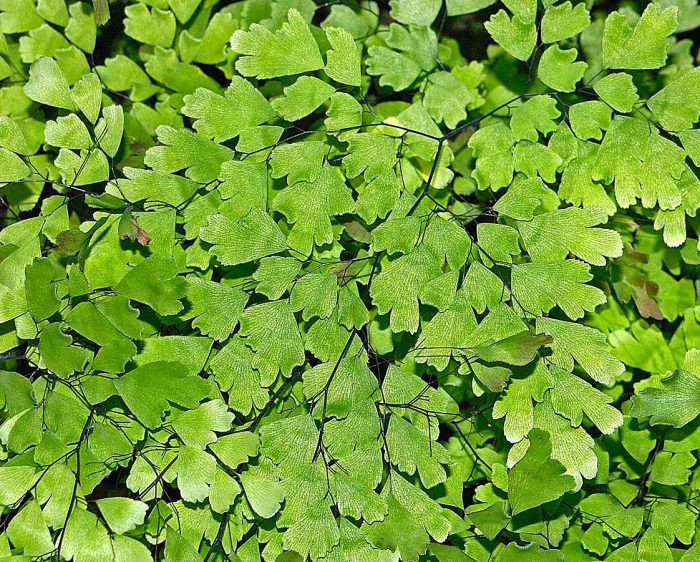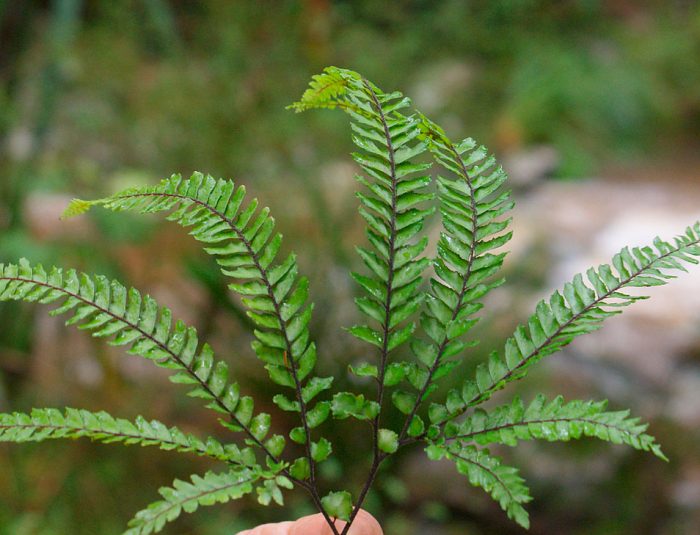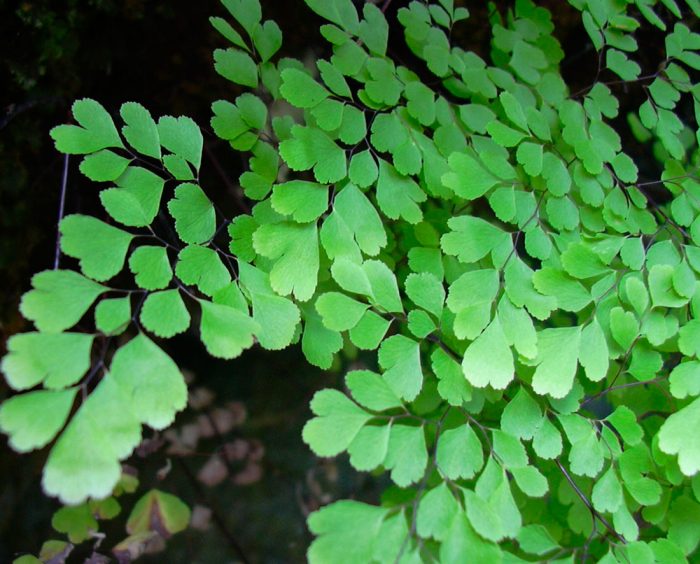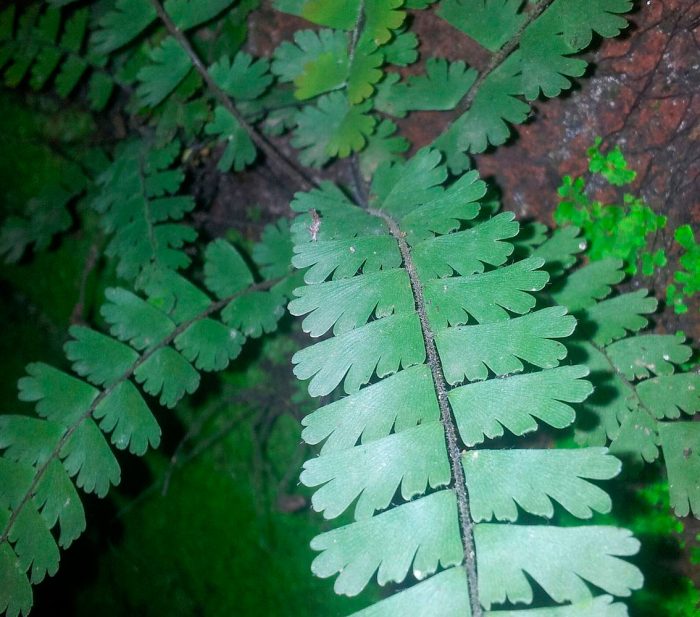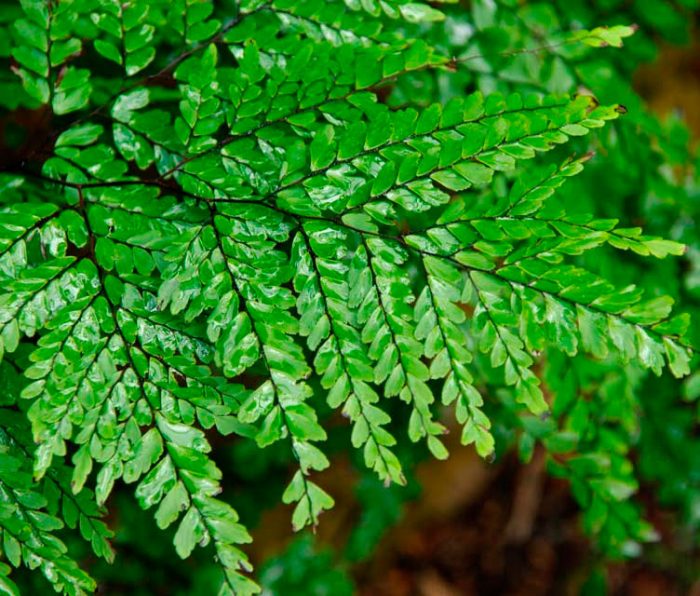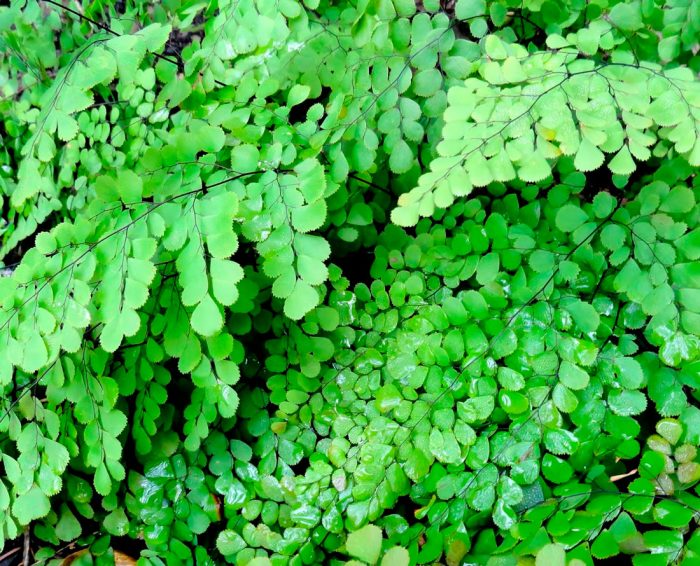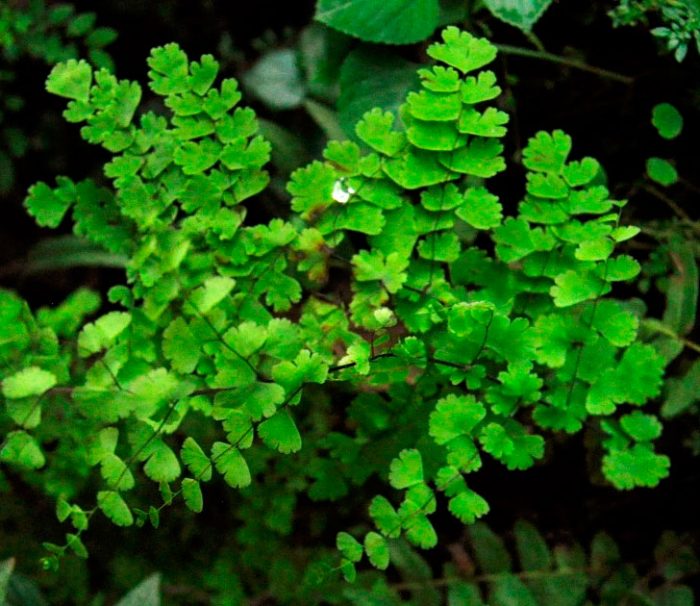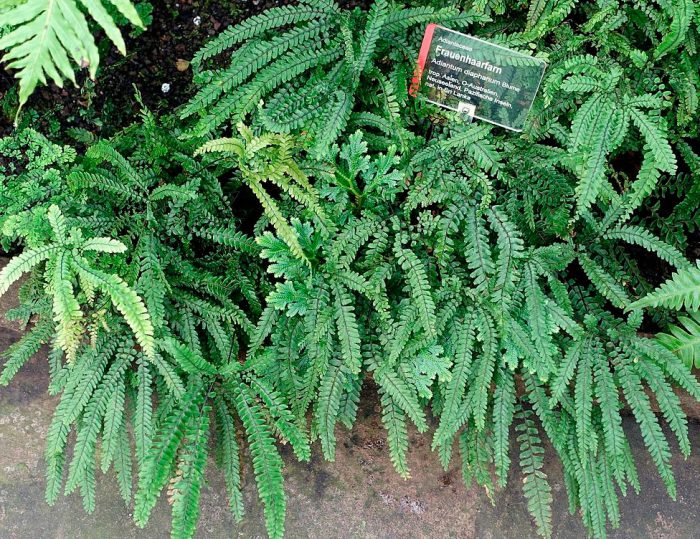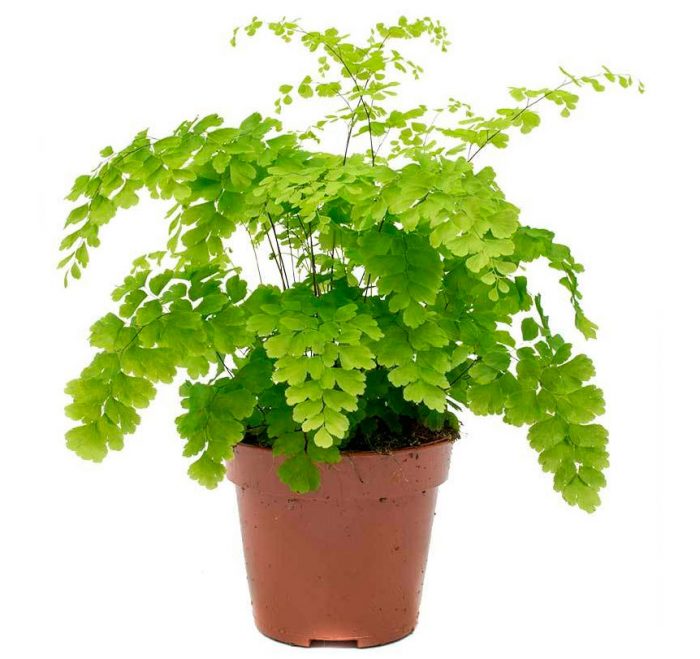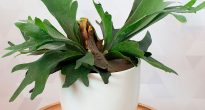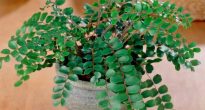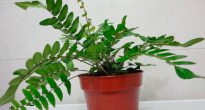The Adiantum plant, which is also called adiant, belongs to the genus of ferns of the monotypic Pteris family. This genus unites about 200 species. The name of such a plant consists of the prefix "a", which translates as "no-, no-", and the second part of the name from Greek translates as "moisten", or "moisten". As a result, the name of such a flower is translated as “non-wetting plant”, this is due to the fact that its foliage has the property of repelling water, so that it does not get wet. This plant is most often found in the tropical regions of the South American Andes and East Asia. Maidenhair prefers to grow on fertile moist soil, which is typical for rocks in places located near waterfalls and springs. The maidenhair was already known to man at the time of Pliny the Elder, who was the author of Natural History, he wrote about it in his writings. Among flower growers, maidenhair is the most popular among all decorative ferns. It can be grown both at home and in a greenhouse. In addition to the fact that this plant has a spectacular appearance, it is also healing.
Content
- 1 Brief description of cultivation
- 2 Features of the maidenhair
- 3 Home care for maidenhair
- 4 Reproduction methods
- 5 Diseases and pests
- 6 Properties of the maidenhair
- 7 Types of maidenhair with photos and names
- 7.1 Adiantum capillus-veneris
- 7.2 Adiantum pedatum
- 7.3 Tenerum adiantum (Adiantum tenerum)
- 7.4 Small-haired maidenhair (Adiantum hispidulum)
- 7.5 Adiantum raddianum
- 7.6 Adiantum caudatum
- 7.7 Beautiful maidenhair (Adiantum formosum)
- 7.8 Adorable adiantum (Adiantum venustum)
- 7.9 Wedge-shaped maidenhair (Adiantum cuneatum)
- 7.10 Transparent adiantum (Adiantum diaphanum)
- 7.11 Adiantum Fragrans
- 8 Signs associated with maidenhair
Brief description of cultivation
- Bloom... Grown as an ornamental deciduous plant.
- Illumination... Shaded location (East and North orientation windows are best).
- Temperature regime... In the summer, no more than 22 degrees, and in the winter - about 15 degrees.
- Watering... You need to systematically moisten the substrate in the pot. In the warm season, this is done twice a week, and in the cold - 1 time in 7 days. It is recommended to water the fern using the bottom watering method; for this, the pot with the bush is immersed in a container filled with water.
- Air humidity... It should be increased. On hot days, it is recommended to moisten the foliage with a sprayer every day.
- Fertilizer... In April – September, the fern is fed with fertilizer for decorative deciduous plants in a half dose of that recommended by the manufacturer. In winter, feeding is not carried out.
- Dormant period... In October – February.
- Transfer... On average, the maidenhair is transplanted 1 time in 2 or 3 years.
- Reproduction... Spores and division of the rhizome.
- Harmful insects... Scabbards, mealybugs, aphids and spider mites.
- Diseases... If you take care of the fern incorrectly, then it will lose its decorative effect.
- Properties... The fern has medicinal properties that are widely used in Chinese traditional medicine and in Western Europe.
Features of the maidenhair
The maidenhair fern is a perennial herb, its rhizome is thin and creeping, it is covered with matte brown or black scales. The leaf plates can be alternately or oppositely positioned; they have dark glossy petioles that reach about 25 centimeters in length. Petioles at the base are covered with scales. Smooth and wide, heavily dissected foliage is colored green or gray. Its segments are fan-shaped, they are obovate, wedge-shaped and trapezoidal. On the seamy surface of the segments along the veins there are sori with sporangia of an oblong, round or linear shape. In the garden, most often the maidenhair is grown, and at home, the maidenhair, called "Venus hair", is most often cultivated, as well as the transparent maidenhair, Ruddy, gentle, etc.
Home care for maidenhair
Illumination
When grown at home, maidenhair reacts extremely negatively to direct sunlight. It grows well in partial shade; therefore, windowsills of northern and eastern orientation are perfect for it. The fact is that due to excessively bright light, the lacy greenish foliage begins to die off.
Air humidity and temperature
Indoor maidenhair needs clean and fresh air, but it needs to be protected from drafts, and it also does not like dust. Therefore, the room where the flower stands must be systematically ventilated, and wet cleaning must also be regular. In the kitchen there is very heavy air for the fern, which can destroy it, and tobacco smoke can also harm it.
Make sure that in the warm season, the temperature in the room is not higher than 22 degrees, since the heat is destructive for this plant. And in winter, it is recommended to move it to a cool place (about 15 degrees), located far from heating appliances. Try to rotate and rearrange the container with the flower as little as possible, as it reacts extremely negatively to this.
Maidenhair needs high humidity. To do this, on hot days, even in summer, even in winter, it should be moistened with warm water from a spray bottle. However, when the room is too cold, it is better not to moisten the bush, because in this case, this procedure may harm it.
Top dressing
Fern feeding is carried out only in April – September. To do this, use a liquid fertilizer for decorative deciduous houseplants in a half dose of that recommended by the manufacturer (see instructions). Fertilizers are applied to the substrate once every 20 days. In winter, the plant is not fed.
Pruning
In order for the maidenhair to always be attractive, it will need regular pruning, which is carried out in the spring. To do this, remove very old, sluggish and starting to turn yellow leaves. If pruning is carried out in a timely manner, then the bush will spend its saved forces on the formation of new wai. When the bush is pruned, it is moistened with a sprayer and watered.
Watering
Such a fern must be watered systematically in a timely manner.In no case do not allow the earthen coma to dry out in the pot, as this can cause the foliage to dry out and die off. If there is stagnation of water in the substrate, then rot may appear on the roots. To prevent uneven watering, bottom watering is used for the fern. To do this, a container with a bush is immersed in water, which should be filled with a basin, it should be well settled and at room temperature. It is necessary to pull out the pot only after the surface of the soil mixture in the container with the flower begins to shine with water. Then the plant is transferred to a shell and waited until the excess liquid drains, and only then is it transferred to a permanent place. In winter, the frequency of watering should be reduced, but the substrate will need to be moistened in the same way. On average, in summer, you need to moisten the soil twice in 7 days, and in the cold season - once a week.
Maidenhair transplant
Such a fern is characterized by very slow growth, and also by the fact that it prefers to grow in a tight container. In this regard, it is transplanted only when the roots appear from the drainage holes. On average, the transplant is carried out 1 time in 2 or 3 years in the spring. If the bush is old, then instead of transplanting, the top layer of soil mixture with a thickness of 50 to 70 mm is changed in a pot every year.
The fern has a very powerful root system, therefore, for its cultivation, it is recommended to choose a wide pot made of wood or ceramic (unglazed from the inside), at the bottom there should be large holes for drainage. A good drainage layer must be made at the bottom of the container. A suitable substrate should be loose and acidic, as well as saturated with humus, the composition can be as follows: 1 part of leafy soil and 2 parts of peat. The drainage layer is covered with a thin layer of soil mixture, after which the plant is carefully transferred into the pot. Carefully fill all the voids with a new soil mixture, while it is not necessary to tamp it strongly, since the roots should be in a loose substrate.
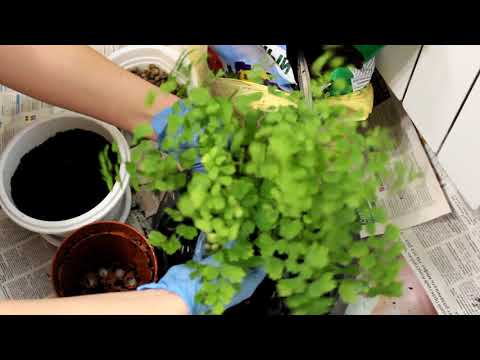

Watch this video on YouTube
Reproduction methods
By dividing the bush
Indoors, maidenhair can be propagated by dividing the rhizome. During the spring transplant, an adult overgrown bush is pulled out of the pot. It is divided into several parts using a very sharp instrument. At the cuttings, the places of the cuts are sprinkled with coal powder, after which they are planted in individual pots. Inspect the bush before dividing it. If it has few points of growth, then the plant is not suitable for division, since as a result of this procedure it may die.
The planted delenki take root for quite a long time and only then start to grow. Wait for the potted earth to dry thoroughly before cutting the rhizome into pieces. And when planting delenki in separate pots, make sure that the root collar is not too deeply buried in the substrate, otherwise rot may appear on the shoots
Growing from seeds
It is possible to propagate maidenhair in room conditions by disputes. To do this, take a low container and fill it with a mixture of sand, peat and leafy soil (1: 2: 1). Compact the substrate and spill it with freshly boiled water. When it becomes cool, evenly distribute the spores on its surface, cover the crops with a film (glass) on top and transfer them to a warm and dark place. Before sowing, the spores for disinfection are moistened from a sprayer with a weak solution of potassium manganese. In order for the seedlings to appear as quickly as possible, the crops will need bottom heating up to 21 degrees. The first shoots can appear both after 1 week and after 3 months. When this happens, the shelter is removed from the container, and the crops are moved to a well-lit place, protected from direct sunlight. The grown plants dive into a larger container, keeping a distance of 25 mm between them.But it is better to immediately plant them in 2-3 pieces in individual containers filled with peat soil.
Diseases and pests
Pests
The foliage of the maidenhair contains substances that repel pests. But today some insects are able to quickly adapt to various poisons, even very strong ones. In this regard, scale insects, aphids, mealybugs and spider mites can settle on the plant.
If scale insects are found on the bush, then they must be removed from it with a brush or cotton swab moistened with alcohol. Aphids are fought by treating the plant with a soap solution, which must be washed off the foliage. And if the aphid still remains, then the treatment is carried out using a solution of Inta-Vir, Derris, Antitlin, Aktellik, Decis, Biotlin or Fitoverm. To get rid of the mealybug, the bush must be sprayed with a special insecticidal preparation, for example: Confidant, Antitlin, Aktara, Biotlin, Confidor, Fitoverm or Mospilan. If spider mites are found, then treatment with Fitoverm or Aktellik will be required.
Diseases
Maidenhair is very resistant to diseases, but if you take care of it incorrectly, this can negatively affect its decorative effect. For example, due to poor watering or when gas is burned near a plant, its foliage begins to dry out and turn brown at the edges. Flying foliage indicates that the air in the room is excessively dry. In this regard, it is necessary to moisten and water the bush regularly and in a timely manner.
If the leaves of the bush become faded, this means that the place where it stands is lit too intensely. Therefore, move the pot to a darker place. If the foliage of the maidenhair curls, but does not dry out, then this is a sign that the room has excessively high humidity and too low air temperature.
Possible problems
- Shoots dry out, leaf tips dry - low air humidity, hot.
- Pale, limp leaves - overflow of soil at low temperatures. Rot may appear on the root system.
- In the case when in winter at an increased temperature in the room all the foliage is dry, the maidenhair should be moved to a cool room (18–20 degrees) and systematically moisten the earth. New leaves may form if the roots are intact.
- The leaves turn pale, turn yellow and dry - direct rays of the sun fall on them.
- Foliage turns yellow massively - too little watering or the flower needs feeding.
Properties of the maidenhair
The adiantum foliage contains triterpenoids, flavonoids, lipids, steroids, phenolcarboxylic acids and their derivatives, as well as essential oil. On the territory of Western Europe, infusions, medicinal powders and syrups, preparation of such a plant from leaf plates are widely used. Syrups and infusions are used as a remedy with antipyretic and expectorant effects, and the aqueous extract has antimicrobial properties.
Means made on the basis of maidenhair are used for diseases of the liver, respiratory tract, bladder and spleen. The juice obtained from the foliage is used to make compresses and lotions from the bites of rabid animals for detoxification purposes, and also in the treatment of malignant ulcers. In Chinese medicine, a decoction is prepared from the leaves of the maidenhair, which helps in the treatment of alcohol addiction.
To reduce the amount of dandruff, it is recommended to rinse your hair with a decoction of maidenhair leaves, or you can add the juice of this plant to the water. In the treatment of psoriasis, an alcoholic tincture of maidenhair is used.


Watch this video on YouTube
Types of maidenhair with photos and names
Adiantum capillus-veneris
In natural conditions, the species can be found in the mountains of the Crimea and the Caucasus, as well as in Central Asia. It prefers to grow on moist limestone stones near water sources.Its thin rhizomes are colored black. The species got this name due to the fact that delicate and light fan-shaped greenish leaf plates grow on long petioles (about 25 centimeters). As a rule, the species is cultivated at home.
Adiantum pedatum
This species is one of the most beautiful ferns. The delicate openwork plant can be found in the deciduous forests of North America and East Asia. The height of the bush is about 0.6 m. Its foliage is glossy, one-sided flat, greenish in color, it is pinnately dissected and incised along the edge. The leaf plates are arranged horizontally on thin glossy petioles. The species has a very high frost resistance, it is able to withstand a temperature drop down to minus 35 degrees. The most popular varieties:
- Compactum - the height of the bush is about 0.35 m;
- Imbricatum - such a dwarf variety in height reaches only about 15 centimeters;
- Aleutikum - this variety has a height of only about 10-12 centimeters, but it can reach a width of 15 to 20 centimeters, most often it is grown in a pot, since it tolerates bright sunlight better than other ferns;
- Japonikum - a young bush has shoots of a copper-pink hue, but over time they turn green, the height of the bush is up to 0.45 m, and in diameter it reaches about 0.3 m.
Tenerum adiantum (Adiantum tenerum)
Under natural conditions, the species can be found in the tropical regions of America and in the Greater and Lesser Antilles. The creeping rhizome of the bush is rather short. Triple-pinnate leaf plates at the base have a wedge-shaped shape, and at the upper edge they are broadly serrated. The foliage is about half a meter wide and up to 0.7 m long; it grows on long petioles (about 0.3 m). The best varieties:
- Farleyens - the foliage of the bush is very effectively twisted;
- Scutum Roseum - young foliage can reach a height of 0.3 m, it has a variable color from green to pinkish.
Small-haired maidenhair (Adiantum hispidulum)
In nature, the species prefers to grow along the snow line of the African mountains, and it is also found in Australia, Madagascar, India and New Zealand. The rhizome of the bush is creeping, the shape of the leaves is hand-cut, they are covered with small bristles, and their length varies from 15 to 25 centimeters. The foliage is located on petioles about 0.35 m long. Rhomboid leaves of the second order are about 5 mm wide and up to 20 mm long, both of their surfaces are covered with small bristles. In indoor conditions, the view looks very impressive.
Adiantum raddianum
Or wedge-shaped (Adiantum cuneatum). The homeland of this epiphyte is the subtropical Brazilian forests. The length of gracefully curved leaf plates is about 0.45 m, and their width is up to 0.25 m. The foliage is dissected into numerous rich green leaves, which are located on glossy black petioles. Popular varieties:
- Grasillium and Micropinnulum - these varieties have finely dissected foliage and are distinguished by a high demand for high humidity, therefore they are recommended to be cultivated in florariums;
- Fritz Luth and Festum - these varieties are more resistant to adverse conditions, and therefore they can be cultivated at home.
Adiantum caudatum
The species is grown as an ampelous plant, as its foliage reaches a length of about 0.6 m. The leaf petioles are brown in color, and there are offspring on the tops of the leaves. This species reacts extremely negatively to drying out a clod of earth in a pot.
Beautiful maidenhair (Adiantum formosum)
The height of the bush of this species is about 100 cm, its rhizome is very fragile. The multi-pinnate leaves are located on the petioles of a black-purple hue. The dark green segments of the leaf blades are triangular-obovate.
Adorable adiantum (Adiantum venustum)
In nature, the species can be found in Kashmir and Nepal.The narrow greenish leaf plates reach about 20 centimeters in length, and they are located on purple-black petioles. Foliage segments are slightly pointed. If the bush is exposed to low temperatures, then its foliage will turn pale brown.
Wedge-shaped maidenhair (Adiantum cuneatum)
The view is similar to the beautiful maidenhair, but its soruses are shaped like a horseshoe. He comes from the South of Brazil.
Transparent adiantum (Adiantum diaphanum)
The height of the bush varies from 0.25 to 0.4 m. The pinnate leaf plates are double-pinnate at the base. The length of wai is about 20 centimeters, and the width is up to 3 centimeters, they are located on thin long (about 20 centimeters) petioles. The greenish segments of the leaf blades are glabrous and broadly oval.
Adiantum Fragrans
This type is very popular with flower growers. Under natural conditions, it is found in southern Asia and the South American Andes, where it forms dense bushes. This delicate fern is fast growing and reaches a height of about half a meter. The length of the greenish oval-shaped leaf plates is about 30 mm, and the width is up to 15 mm, they are located on very long petioles (from 10 to 15 centimeters).
Signs associated with maidenhair
If a person is in the same room with the maidenhair, then he feels its incredible freshness. In addition, fern helps to reduce the level of nervousness in the atmosphere, and it is also able to instill complacency.


Watch this video on YouTube

